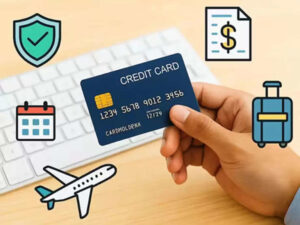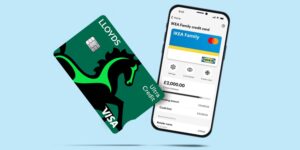Credit card rewards programs—offering everything from travel points and cash back to gift cards and merchandise—are a ubiquitous feature of modern finance. Lured by sign-up bonuses and the promise of “free” benefits, millions of consumers enthusiastically participate. But beneath the glossy marketing, a critical question remains: Are credit card rewards truly worth the effort, the risk, and the potential costs?
This detailed guide will cut through the noise, analyze the mechanics of rewards programs, and provide a clear framework for determining if they align with your personal financial goals.
Understanding the Mechanics: Where Does the “Free Money” Come From?
Before evaluating the worth of rewards, it’s essential to understand their source. Rewards are not altruistic handouts from the bank; they are funded by two primary sources:
- Interchange Fees (Merchant Fees): This is the fee the merchant pays to the card issuer (the bank) every time you swipe your card. It typically ranges from 1.5% to 3.5% of the transaction amount. A portion of this fee is recycled back to the consumer as a reward (e.g., 1% cash back).
- Interest and Fees from Cardholders: For those who carry a balance, the high interest rates (APR) charged by the issuer are a massive profit driver. Annual fees, late payment fees, and over-limit fees also contribute significantly.
The crucial takeaway is this: The entire rewards ecosystem is a calculated business model designed to encourage card usage and, crucially, to profit from cardholders who do not pay their balance in full.
The Two Financial Scenarios: When Rewards are Profitable vs. Harmful
The worth of a rewards program is entirely dependent on your financial habits. There are two distinct scenarios:
Scenario 1: The “Maximizer” (Rewards are Worth It)
The Maximizer uses a rewards card as a substitute for cash or a debit card, not as a tool for incurring debt.
- Key Behavior: Pays the full statement balance on time, every single month.
- Outcome: Avoids all interest charges, effectively making the Annual Percentage Rate (APR) irrelevant. The reward earned (e.g., $300 in cash back per year) is pure profit, minus any annual fee.
- The Math: If a card offers 2% cash back and you spend $\$20,000$ annually, you earn $\$400$. If the annual fee is $\$95$, your net gain is $\$305$. In this scenario, rewards are undeniably worthwhile.
Scenario 2: The “Spender” (Rewards are Not Worth It)
The Spender is enticed by the rewards but struggles to control spending or pay the balance in full.
- Key Behavior: Carries a balance from month to month, or occasionally pays late.
- Outcome: The interest charges quickly wipe out and far exceed any rewards earned. The focus on earning points often leads to “points chasing,” where the consumer spends more than they normally would just to achieve a higher reward tier.
- The Math: Using the same $\$20,000$ annual spend with a 2% cash back card (earning $\$400$) and a typical 25% APR. If you carry an average balance of just $\$1,500$ throughout the year, the interest paid would be approximately $$375 $(\$1,500 \times 0.25)$. Even this relatively small balance nearly negates the entire year’s worth of rewards. A larger balance would result in a net loss. For the Spender, rewards are a financial trap, not a benefit.
Evaluating Different Reward Types
The type of reward influences its ultimate value:
| Reward Type | Average Value (Redemption Rate) | Pros | Cons |
| Cash Back | 1¢ per point (1%) | Simple, flexible, no blackout dates, immediate value. | Fixed value, typically lower return rate than optimized travel. |
| Travel Points/Miles | 1.2¢ – 5¢ per point (Variable) | Potential for outsized value (e.g., business class flights). | Complex to redeem, subject to availability, devaluation risk. |
| Fixed-Point Currencies | 1¢ per point (Varies) | Easy to use for merchandise, gift cards, or statement credit. | Value is often low; merchandise is often overpriced compared to retail. |
Key Insight: The highest potential value lies in travel points, but only if you are willing to dedicate time to mastering complex booking systems and transfer partners. A simple 2% cash back card often provides a better risk-adjusted return for the average person.
The Hidden Costs and Traps
Even for the Maximizer, there are subtle costs to consider:
1. Annual Fees
Many premium rewards cards charge annual fees ranging from $\$95$ to over $\$600$. You must ensure the value of the rewards and benefits (like airport lounge access, statement credits, or free checked bags) clearly exceeds this fee.
Example: A $\$450$ annual fee card is only worth it if you use enough of its benefits (e.g., a $\$200$ airline credit and a $\$100$ hotel credit) to bring the net cost down, and the remaining rewards earned justify the rest.
2. Point Devaluation
Credit card issuers can, and often do, decrease the value of points without warning. A point that was worth 1.5 cents for a flight last year might only be worth 1.2 cents today. This devaluation risk means that hoarding points is generally a bad strategy. Points are a liability on the issuer’s balance sheet, and they are incentivized to make them harder to use or worth less over time.
3. Complexity and “Opportunity Cost”
Managing a complex “credit card ecosystem” (juggling 3-5 different cards to maximize 5% back on specific categories) requires time and mental effort. For some, this “hobby” is fun; for others, the time spent strategizing could be better spent earning more money, investing, or relaxing.
The Final Verdict: Creating Your Personal Rewards Policy
So, are credit card rewards worth it? Yes, but only under strict conditions.
1. The Essential Rule (Non-Negotiable)
- You must pay your balance in full every single month. If you have ever paid a cent in credit card interest in the last 12 months, your focus should be on a card with a 0% introductory APR to pay down debt, not on maximizing rewards.
2. The Maximizer’s Strategy
- Focus on Simplicity: Start with a high, flat-rate cash back card (e.g., 2% on everything) to capture the vast majority of potential value with zero effort.
- Assess Annual Fees Annually: If you are paying a fee, calculate the actual monetary value of the rewards and benefits you received in the last 12 months. If the value is less than the fee, downgrade or cancel the card.
- Avoid Chasing: Do not buy anything you do not genuinely need just to earn a few extra points. Your primary financial goal is saving and investing, not points optimization.
In conclusion, credit card rewards can be a valuable supplement to a healthy financial life, providing a tax-free return on your everyday spending. However, the true worth of any rewards program is measured not by the points you accumulate, but by the zero dollars you pay in interest. For the financially disciplined, rewards are a benefit; for everyone else, they are an expensive distraction.







